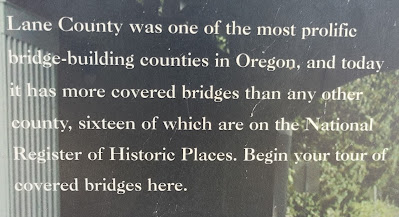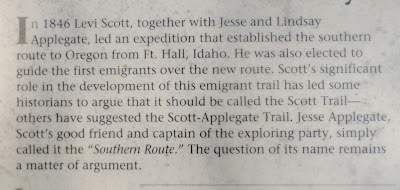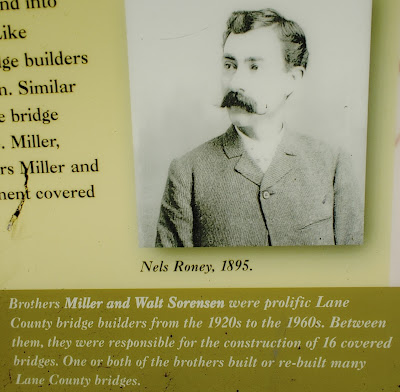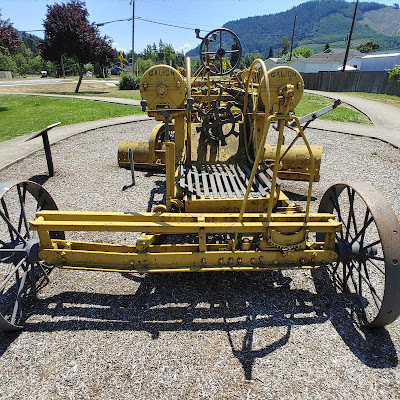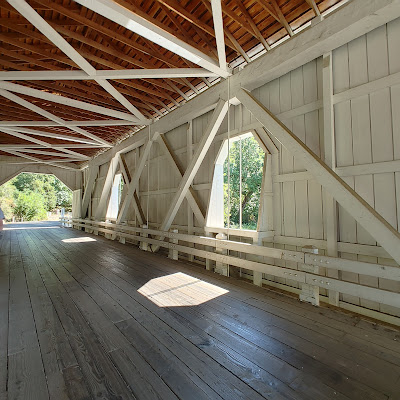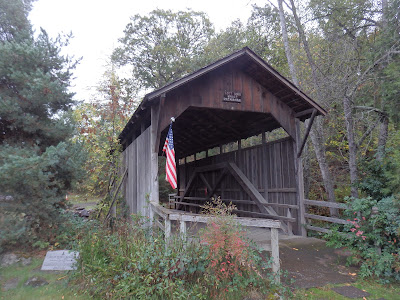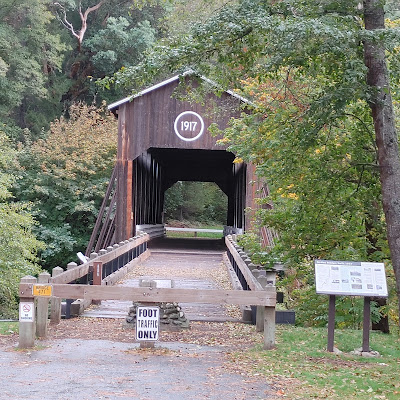 |
| If the print is too small to read, click on the photo and it will enlarge. |
 |
| The route got better at times, but it also got worse. |
 |
| Notice the long, narrow windows at the top of the wall and the ventilation along the bottom of the walls. |
 |
| Ritner Creek Covered Bridge and the modern bridge that replaced it. |
 |
| Bricks sold to raise funds for bridge maintenance. |
 |
| The bridge crosses Wildcat Creek just as it joins the Siuslaw River. |
 |
| Hwy 126 bridge crossing the Siuslaw River |
 |
| Metal outlines portraying the trains that passed through the original Chambers Bridge adorn the walls. Placards with information about the bridge were placed on the railing. |
 |
| Lumber boards were laid parallel on the bridge to simulate railroad tracks. Clear roof helped illuminate the interior. |
 |
| Custom shortened locomotives stacked to fit inside the bridge. The last train passed through in 1951. The tracks were a spur off the Southern Pacific Railroad. |
 |
| Metal outline of locomotive on east side of bridge. |
 |
| There was a kiosk with information panels on the east side of the bridge. |
 |
| Click on photo to enlarge for reading. |

 |
| The Centennial Bridge led to Veterans Park where several information panels gave us more information about the area. |
 |
| Oregon Film Trail signs located by the Currin Covered Bridge. |
 |
| We don't have very many photos of this nice bridge because there was a Mountain Bike Oregon event happening and a lot of vehicles and people around. |
 |
| Informational panels about the bridge, covered bridges in general, and the area were located inside and outside the bridge. |
 |
| The windows sported colored lights above them. |
 |
| I found this photo online of what the bridge looks like at night when the lights are lit. Beautiful! |



 |
| The sidewalk was made to look like it was a rail way. |
 |
| Information on each piece of equipment is in the following photo. |
 |
| Crawfordville Covered Bridge – Sweet Home Built in 1932, it is 104 feet long. The bridge was bypassed in 1963 by a concrete bridge and is inactive. The movie, “Flood!” was filmed here in 1976. |
 |
| Too bad their nice information sign was covered by the opened gate. |
 |
| Silverton Creek Pedestrian Covered Bridge in Silverton Located in the town square park, it has a memorial for Silverton fallen heroes. We couldn't find much information on this bridge. |
 |
| The view from the bridge. It has a wider area in the middle of the bridge and some photos online show a wedding taking place inside the bridge. |
 |
| Graffiti under the bridge |
 |
| Cavitt Creek Covered Bridge by Glide Built in 1943 by Floyd Frear. It is named after Robert Cavitt, who settled along the creek in the 1880's. The covered section of the bridge is 70 ft long. |
 |
| The bottom of the ceiling lists the donors who sponsor the bridge. |
 |
| 76 embedded in sidewalk notes the year the bridge was built. |
 |
| This is the only bridge we found that had a visitor book. |
 |
| This is a unique solution to the graffiti problem. Looks like it worked. |
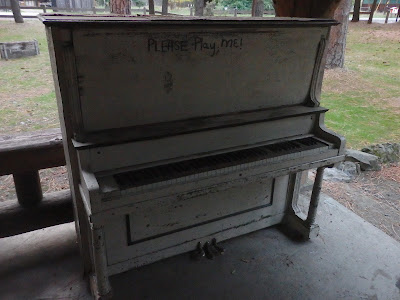 |
| The nearby park had a piano in the pavilion with the words "Please play me" written on it. |
 |
| Love this totem pole next to the bridge. |
 |
| Wild turkeys along the road. |
 |
| This concludes our summer of checking out covered bridges. If you know of any we missed, let us know in the comments below. Same goes for any mistakes we have made. |






